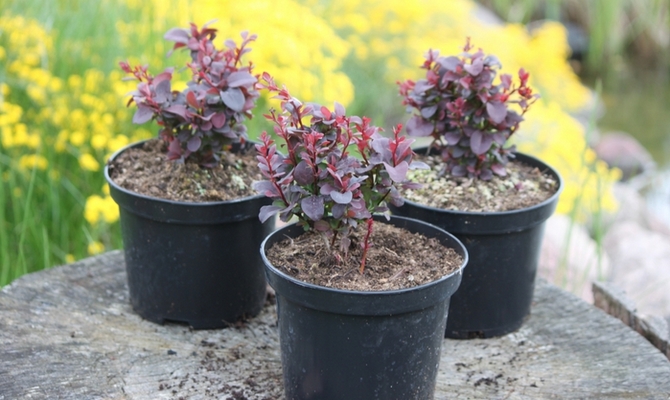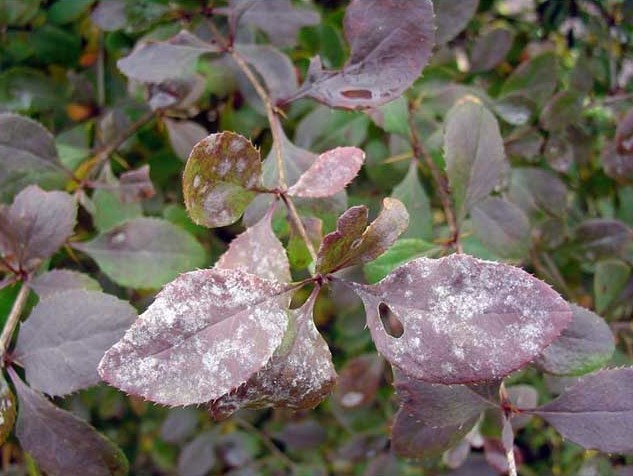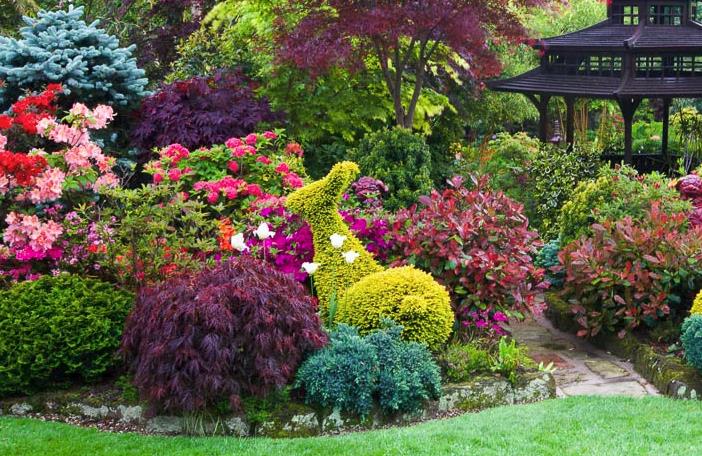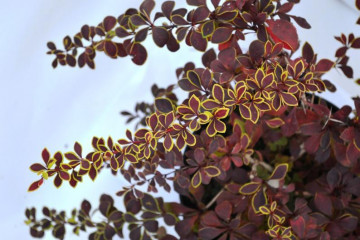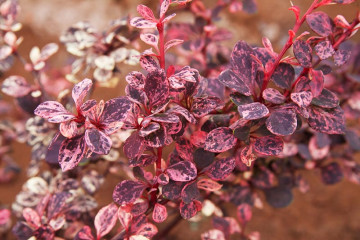Barberry Natasha - variety description and cultivation
Content:
Under natural conditions, barberry Natasha grows in the Far East. Gradually, the culture spread and came to Europe and North America. Today the plant is considered to be very popular. Gardeners appreciate it for its excellent decorative properties and unpretentious care.
Description barberry Natasha
This crop is a deciduous shrub that can grow up to 2.5 m in height. When grown under special conditions, the plant usually does not exceed 1 m.
Description of barberry Natasha includes the following characteristics:
- The plant has arched ribbed shoots. They are characterized by a rich red or orange color. Gradually, the branches turn brown or brown.
- Barberry is characterized by reddish ovoid buds 5 cm long.
- The leaves are round or oval in shape. They are on petioles and reach 2-3 cm. Above, the foliage has a rich green tint, and below it has a bluish color. In the fall, it turns red or yellow.
- The branches of the plant are covered with thin thorns. Inflorescences can be solitary or form clusters. They appear in the first half of May.
- In September or October, the bushes are decorated with elongated berries. They are characterized by a coral red hue.
Planting a plant
The plant is recommended to be planted in open ground in the autumn season. This must be done before the arrival of cold weather. Thanks to this, the culture will have time to adapt to a new place. Its active development will begin in the spring.
In the spring season, barberry can also be planted. However, this procedure should be done before bud break. If you plan to plant several bushes next to each other, the gap between them should be at least 2 m.
The choice of location has a direct impact on the color of the leaves. In the sun, they acquire a reddish-yellow tint, and in the shade they turn green.
Planting from seeds
When barberry is propagated by the seed method, the planting material must be sown in the fall in open ground. To do this, it is laid out in small grooves with a depth of 1-3 cm, filled with sand. From above, the seeds can be covered with a heater that allows air to pass through.
The planting material is characterized by low germination rate. It is no more than 30%. It is important that the seeds are fresh. You can pick them yourself from the ripe fruits of the plant.
Planting seedlings in open ground
It is necessary to plant seedlings in open soil in the spring. Over the summer, young plants will be able to gain strength and survive frost.
You need to plant the bushes at a short distance and provide them with high-quality care. It includes weeding, loosening, watering. The soil must have good drainage.
How to care for barberry Natasha
In order for the barberry Thunberg Natasha to develop normally, he needs to provide full care.
- Watering
In case of periodic precipitation, it is not required to additionally moisten the soil.In dry weather, the barberry must be watered. To do this, pour warm water at the root. It is important to avoid getting liquid on the leaves.
Regular watering is required for young bushes. This will make it easier for them to take root. Excessive soil moisture harms the culture and can even lead to its death.
- Top dressing
Every year it is worth applying fertilizer to the soil. For barberry of this variety, it is useful to use nitrogen preparations. If you want to get a large number of fruits, you should use products based on phosphorus and potassium.
An excellent option would be universal fertilizers. These include, for example, the drug Kemira-Universal. It is used in early July.
- Pruning
Pruning the plant is rarely required. Usually, it is necessary to shorten the branches when their growth is disturbed. Also, the procedure is carried out with a strong deviation of the shoots from the crown. In this case, it is imperative to get rid of dry and damaged branches.
Pruning is carried out before the start of the movement of the juices.
Reproduction methods
There are several breeding methods for this variety of barberry. It is sometimes bred with seeds. To get planting material, you need to take ripe fruits, separate the seeds from the pulp and put in a solution of potassium permanganate. After that, they need to be dried.
In autumn, the seeds should be placed in the soil to a depth of 1 cm and sprinkled with soil a little. In the spring, after the formation of 2-3 leaves, it is necessary to thin out and grow the bushes for another 2 years. Then they can be seated.
Also, barberry can be propagated by cuttings. The planting material must be cut in mid-July. In this case, remove the lower leaves and place the cuttings in a growth stimulator (Epin or Kornevin are perfect for this purpose). After completing the procedure, the cuttings must be rinsed and planted in a special substrate. To do this, you need to mix peat, humus and fertile soil.
It is recommended to cover the planted cuttings with a plastic dome. It must be removed periodically to ventilate the plants. After the roots appear, the restrictions must be removed.
Also, the culture can be propagated by layering. In the spring, you need to choose a strong annual shoot. It must be bent to the ground and fixed. Top the plant should be sprinkled with earth, leaving only the upper part.
A full-fledged root system will appear by autumn. At this stage, the seedling can be detached from the mother bush and moved to a permanent site.
You can get seedlings from low bushes for 3-5 years. To do this, the plant must be dug up in early spring and divided into identical fragments. The procedure should be carried out very carefully so as not to damage the bushes.
Diseases and pests
Among insects, barberry is most often susceptible to attacks by aphids and moths. A concentrated soap solution will help to deal with aphids. In advanced cases, Aktara or Aktellik are used. If a moth is found on the bushes, it is worth using Decis or Chlorophos.
Also, barberry can suffer from the following violations:
- Powdery mildew - in this case, the leaves are covered with a white bloom. They need to be treated with a sulfur-lime solution. In advanced situations, the affected shoots must be removed completely.
- Spotting - accompanied by the appearance of spots on the leaves. This causes them to dry out. Copper oxychloride will help cope with the disease. They need to spray the bushes.
- Fungal infections - these cause rotting spots on plants.The affected fragments should be treated with fungicides.
- Rust - provokes drying and leaf fall. To cope with the pathology, the bushes need to be treated with Bordeaux liquid. In difficult situations, the plant will have to be burned.
Flowering period
Barberry begins to bloom in May. Inflorescences are present for a short time - only 2-3 weeks. The flowers have a light caramel color.
To a greater extent, the culture is appreciated for its bright and beautiful leaves, so flowering rarely attracts attention.
Preparing for winter
At this stage, you need to remove the weeds and cover the soil with a mulch layer. To preserve the roots, you should leave the fallen leaves under the bush, and in winter - sprinkle it with snow. It is better to tie the ground part and wrap it in fabric. The bush can hibernate vertically or on the ground.
Use in landscape design
The plant has excellent decorative properties. Therefore, it is actively used in landscape design. The culture is great for group plantings. You can also form a hedge in the garden from the bushes.
Beneficial features
Barberry of this variety has no useful properties. It is most often grown for decorative purposes. The fruit tastes bad. Therefore, they should not be added to tea or compote. It is much better to leave the berries on the bushes and admire them. To use the plant for healing, it is worth planting other varieties.
Barberry is a wonderful ornamental plant that serves as a real decoration of the garden plot. The Natasha variety has many advantages and is easy to care for. To achieve good results in decorating a summer cottage, you need to learn how to combine culture with other plants.

